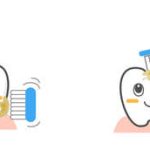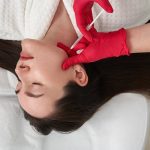1. Understanding the Causes of Hair Loss
Hair loss can be a frustrating experience, but understanding its causes is the first step to finding an affordable solution. There are several common reasons why people experience hair thinning or baldness. Knowing what’s behind your hair loss can help you choose the right treatment without spending a fortune.
Genetics
One of the most common causes of hair loss is genetics. If your parents or grandparents experienced hair thinning, you might be more likely to have it too. This condition, known as androgenetic alopecia (or pattern baldness), affects both men and women. While you cant change your genes, there are cost-effective treatments that may slow down the process.
Stress
High levels of stress can lead to temporary hair loss, a condition called telogen effluvium. When youre stressed, your body shifts more hair follicles into the resting phase, causing increased shedding. The good news? This type of hair loss is usually reversible with proper stress management techniques like exercise, meditation, and better sleep habits.
Diet and Nutrition
Your diet plays a major role in hair health. Deficiencies in key nutrients like iron, biotin, vitamin D, and protein can contribute to hair thinning. Eating a well-balanced diet with plenty of leafy greens, lean proteins, and healthy fats can support hair growth without expensive supplements.
Key Nutrients for Healthy Hair
| Nutrient | Benefits for Hair | Food Sources |
|---|---|---|
| Iron | Supports oxygen delivery to hair follicles | Spinach, red meat, lentils |
| Biotin | Aids keratin production for stronger hair | Eggs, nuts, sweet potatoes |
| Vitamin D | Helps stimulate new hair follicles | SUN exposure, fatty fish, fortified milk |
| Protein | Main building block of hair strands | Poultry, fish, beans |
Medical Conditions
Certain medical conditions can also contribute to hair loss. Issues like thyroid disorders, hormonal imbalances, scalp infections, and autoimmune diseases such as alopecia areata can lead to excessive shedding. If you suspect an underlying health issue is causing your hair loss, consulting a healthcare provider can help you find budget-friendly treatment options.
The First Step Toward Affordable Solutions
The key to treating hair loss without overspending is identifying the root cause. By understanding whether genetics, stress, diet, or medical conditions play a role in your situation, you can focus on cost-effective treatments that target the real issue instead of wasting money on ineffective solutions.
2. Affordable Over-the-Counter Treatments
If youre looking for cost-effective ways to combat hair loss, several over-the-counter (OTC) treatments can help without draining your wallet. Many of these products are easily accessible and have been proven to support hair growth.
Minoxidil: A Proven Hair Growth Solution
Minoxidil is one of the most popular and effective OTC treatments for hair loss. Its available in liquid or foam form and works by stimulating hair follicles to promote regrowth. You can find minoxidil at most drugstores under brand names like Rogaine or in generic versions at a lower price.
How to Use Minoxidil
- Apply directly to the scalp twice daily.
- Be patient—results typically appear after 3-6 months.
- Consistency is key for maintaining progress.
Caffeine-Based Shampoos: A Simple Addition to Your Routine
Caffeine-based shampoos are an affordable option that may help reduce hair thinning by stimulating the scalp and improving blood circulation. While they wont work miracles overnight, regular use can strengthen hair and support overall scalp health.
Benefits of Caffeine-Based Shampoos
- Energizes hair follicles and promotes growth.
- Easy to incorporate into your daily routine.
- A budget-friendly alternative to expensive treatments.
Natural Oils: A Budget-Friendly Boost for Hair Health
If you prefer a more natural approach, essential oils like rosemary, castor, and coconut oil can nourish the scalp and encourage healthy hair growth. These oils are often much cheaper than commercial treatments and come with additional benefits for scalp hydration and hair strength.
Common Natural Oils for Hair Growth
| Oil Type | Main Benefits |
|---|---|
| Rosemary Oil | Improves circulation, strengthens roots, and may promote regrowth. |
| Castor Oil | Packed with fatty acids that nourish the scalp and boost thickness. |
| Coconut Oil | Makes hair stronger, reduces breakage, and hydrates the scalp. |
How to Use Natural Oils
- Massage a few drops into your scalp 2-3 times per week.
- Leave on for at least 30 minutes before washing out.
- You can mix different oils for added benefits.
![]()
3. DIY Home Remedies for Hair Growth
Dealing with hair loss doesn’t have to mean spending a fortune on expensive treatments. There are plenty of natural remedies you can try at home using simple, affordable ingredients. These DIY treatments can help nourish your scalp, strengthen your hair, and promote growth—all without breaking the bank.
Aloe Vera for Scalp Health
Aloe vera is well-known for its soothing properties, but it’s also great for promoting hair growth. It helps reduce dandruff, calms an irritated scalp, and provides deep hydration.
How to Use Aloe Vera:
- Extract fresh aloe vera gel from a leaf.
- Massage the gel directly onto your scalp.
- Leave it on for 30 minutes before rinsing with lukewarm water.
- Repeat 2-3 times per week for best results.
Onion Juice to Stimulate Hair Follicles
Onion juice is rich in sulfur, which can help improve blood circulation to the scalp and encourage hair regrowth. While it may have a strong smell, many people swear by its effectiveness.
How to Use Onion Juice:
- Grate or blend an onion and strain out the juice.
- Apply the juice directly to your scalp using a cotton pad or fingertips.
- Let it sit for 15-20 minutes, then rinse thoroughly with a mild shampoo.
- Use twice a week for noticeable improvement.
Essential Oils for Stronger Hair
Certain essential oils, like rosemary and peppermint oil, have been shown to support hair growth by improving circulation and strengthening hair follicles.
| Essential Oil | Benefits | How to Use |
|---|---|---|
| Rosemary Oil | Stimulates hair growth and improves circulation. | Add a few drops to carrier oil (like coconut or jojoba) and massage into scalp. |
| Peppermint Oil | Energizes the scalp and promotes thicker hair. | Dilute with carrier oil and apply once or twice a week. |
| Lavender Oil | Reduces stress-related hair loss and soothes the scalp. | Add to shampoo or mix with carrier oil for a relaxing scalp massage. |
Nourishing Hair Masks
A simple homemade hair mask can provide essential nutrients that support stronger, healthier hair. Try these easy combinations:
- Coconut Oil & Honey Mask: Mix equal parts coconut oil and honey, apply to damp hair, leave on for 30 minutes, then rinse out.
- Banana & Olive Oil Mask: Blend one ripe banana with two tablespoons of olive oil, apply from roots to ends, leave on for 20 minutes before washing out.
- Coffee & Yogurt Scrub: Mix ground coffee with plain yogurt to gently exfoliate the scalp and remove buildup.
The Key to Success: Consistency
No matter which remedy you choose, consistency is key. Natural treatments take time to show results, so stick with your routine for several weeks before expecting significant changes. By using affordable ingredients you already have at home, you can nourish your scalp and encourage healthier hair growth without overspending.
4. Lifestyle Changes to Support Healthy Hair
Making simple lifestyle changes can help improve hair health without spending a fortune. Your diet, hydration, and stress levels all play a crucial role in maintaining strong, healthy hair. Here’s how you can support hair growth naturally.
Eat a Nutrient-Rich Diet
Your hair needs essential vitamins and minerals to grow strong. Focus on foods rich in protein, iron, and biotin to nourish your scalp and hair follicles.
| Nutrient | Benefits for Hair | Best Food Sources |
|---|---|---|
| Protein | Strengthens hair structure and promotes growth | Eggs, chicken, beans, tofu |
| Iron | Boosts circulation to the scalp for healthy follicles | Spinach, red meat, lentils |
| Biotin | Aids in keratin production for stronger hair | Nuts, sweet potatoes, eggs |
| Omega-3 Fatty Acids | Keeps the scalp hydrated and reduces inflammation | Salmon, flaxseeds, walnuts |
Stay Hydrated
Your hair needs moisture from the inside out. Drinking enough water helps keep your scalp hydrated and prevents dryness and breakage. Aim for at least eight glasses of water per day.
Manage Stress Levels
High stress levels can lead to hair thinning or excessive shedding. Practicing relaxation techniques like meditation, deep breathing, or yoga can help lower stress and promote healthier hair growth.
Avoid Excessive Heat and Harsh Treatments
If youre trying to save money while improving your hair health, reducing heat styling and chemical treatments is a great start. Excessive heat from curling irons or straighteners can weaken hair strands, leading to breakage.
Simple Hair Care Tips:
- Avoid daily heat styling—opt for air drying when possible.
- Use gentle shampoos and conditioners without sulfates.
- Avoid tight hairstyles that pull on the scalp.
- Massage your scalp regularly to boost circulation.
The Bottom Line on Lifestyle Changes for Hair Health
You don’t need expensive treatments to improve your hairs condition. By making small adjustments to your diet, staying hydrated, managing stress, and avoiding harsh treatments, you can support natural hair growth while keeping costs low.
5. When to See a Professional Without Overspending
While home remedies and over-the-counter treatments can help with hair loss, sometimes seeing a professional is the best option. But finding expert advice without spending a fortune can be tricky. Here are some budget-friendly ways to consult a specialist.
Look for Affordable Dermatologists
Many dermatologists offer affordable consultation options, especially for first-time visits. Look for clinics that provide discounted rates or payment plans. Some university hospitals also have dermatology clinics with lower costs for consultations.
Consider Online Consultations
Virtual appointments with dermatologists or trichologists can save you money and time. Many telehealth platforms offer affordable consultations, often at a fraction of the cost of an in-person visit.
Comparison of Online Consultation Platforms
| Platform | Average Cost | Specialties Covered |
|---|---|---|
| Teladoc Health | $75 per visit | General Dermatology |
| MDLIVE | $69 per visit | Hair & Skin Concerns |
| Roman Hair Loss | $15 initial consult | Hair Loss Treatments |
| Hims & Hers | $39 per month | Ongoing Hair Care Support |
Use Community Health Resources
If youre on a tight budget, check out local community health centers and nonprofit organizations. These facilities often provide low-cost or even free consultations for hair and skin concerns.
Where to Find Low-Cost Health Services
- Federally Qualified Health Centers (FQHCs): Offer sliding-scale fees based on income.
- Medi-Cal and Medicaid Clinics: Provide coverage for eligible individuals needing dermatology care.
- Trainee Clinics: Medical schools often have student-run clinics supervised by professionals at reduced prices.
- Community-Based Programs: Nonprofits like the National Alopecia Areata Foundation may provide resources for free screenings.


